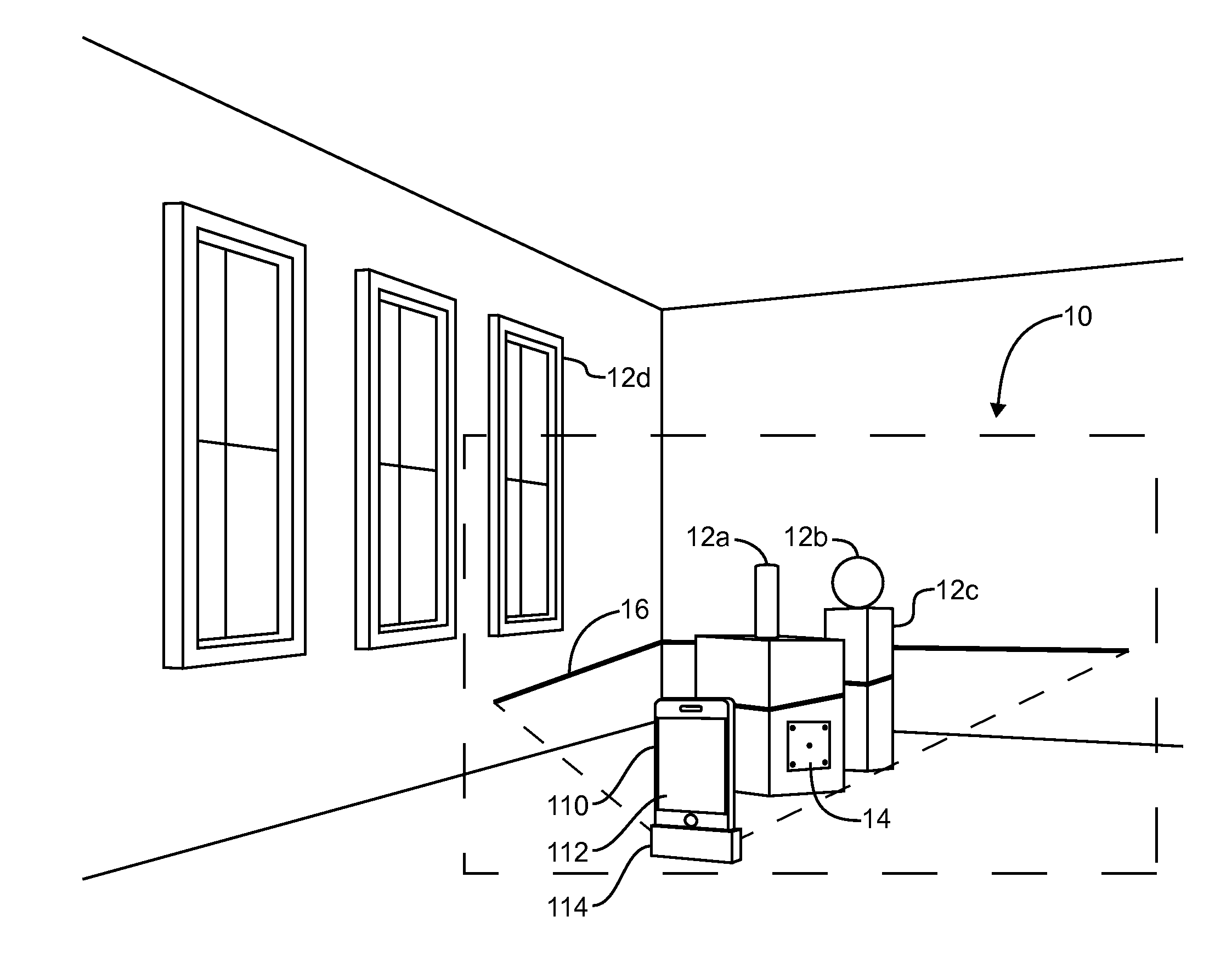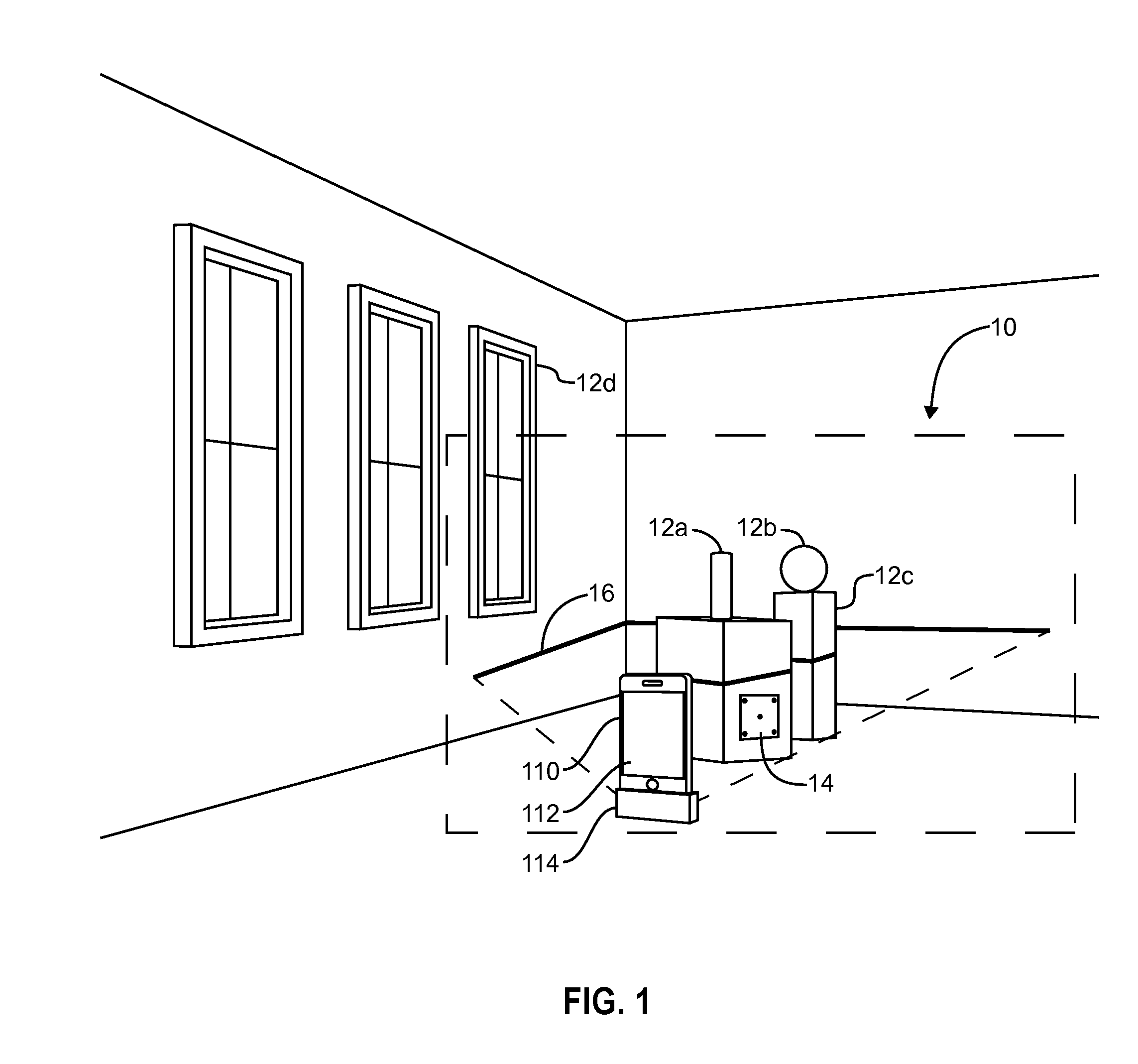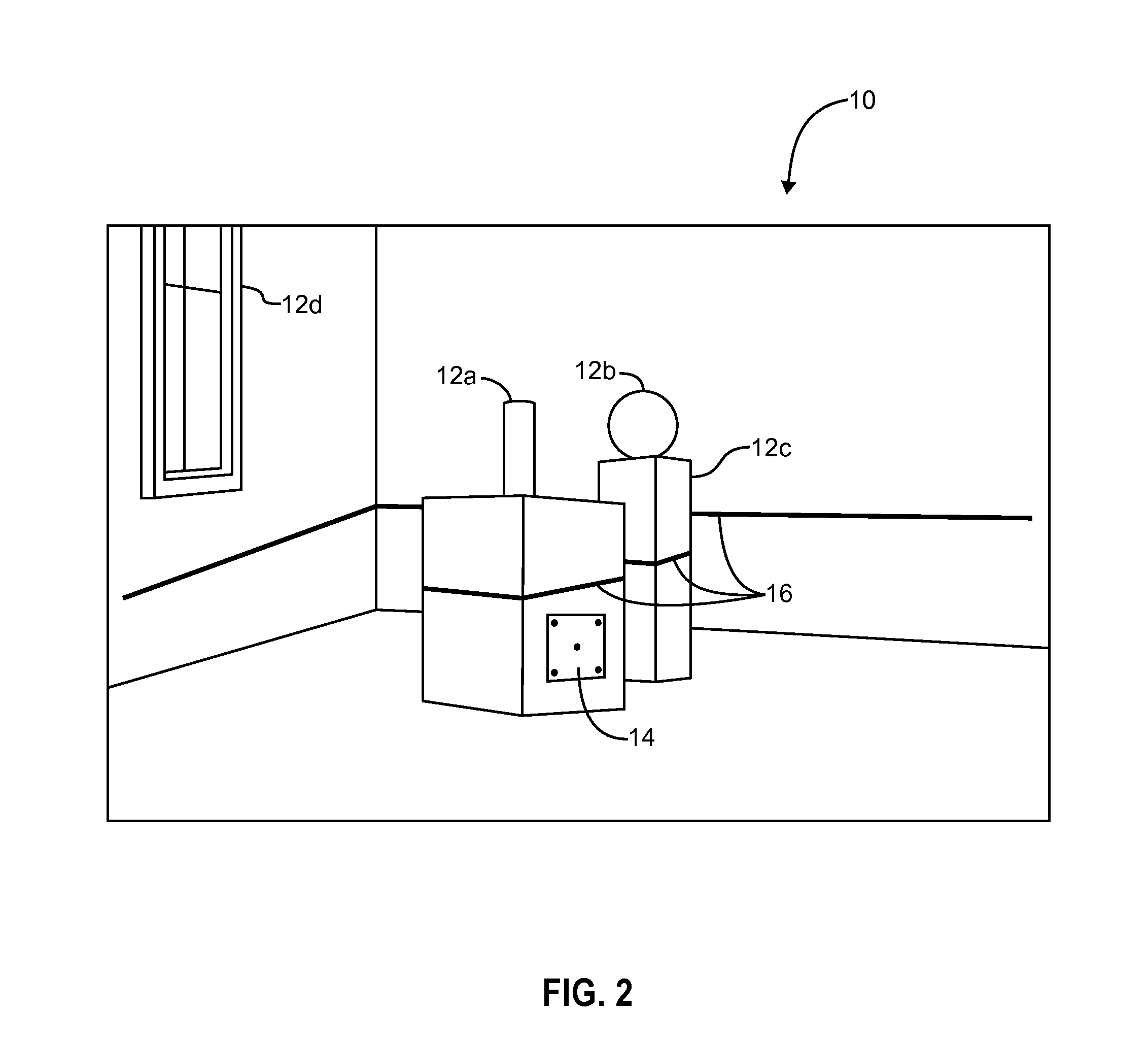Multiple template improved 3D modeling of imaged objects using camera position and pose to obtain accuracy
a technology of imaged objects and camera positions, applied in the field of optical systems, can solve the problems of not providing a way to get a 3d model of the scene, affecting the use of consumer devices with limited processing power, and affecting the use of optical devices
- Summary
- Abstract
- Description
- Claims
- Application Information
AI Technical Summary
Benefits of technology
Problems solved by technology
Method used
Image
Examples
first embodiment
[0068]Light pattern projector 230. One embodiment of this invention uses a visible laser similar to those used in laser pointers followed by an optical element that spreads the laser light into the desired pattern. The laser wavelength should be in the spectrum that can be detected by the standard digital camera 240. If the camera used in conjunction with the light pattern projector is able to detect light outside the visible spectrum, then the light pattern projector can operate in any wavelength of light that the camera is able to detect. However, it is still preferable for the user to be able to see the laser pattern on the object and not have to look at the camera display to see the surfaces that the laser is scanning. The light-spreading element could be a DOE (diffractive optical element) or any other type of optical element such as refractive or reflective that produces the desired pattern. The desired pattern in the first embodiment is a single line of laser light. As previo...
embodiment 110
[0081]In the image capture system, the Camera(s) must be mechanically linked to the Active Illumination device(s). In the embodiment 110 illustrated in FIG. 1 the mechanical linkage is based on both the camera 112 and active illumination device 114 being in physically attached to each other. In addition to being mechanically linked, it is preferable though not essential that the Camera and Active Illumination devices are Electrically linked.
[0082]How the Invention Works.
[0083]FIG. 18 provides a review of the forgoing description of the hardware for a discussion of how the hardware is employed to generate a 3D surface model of an object. The drawing is similar to FIG. 1 but shows a different pose and position of the camera (more angled down). The operation of the invention is diagrammed in the flow chart included as FIG. 19 which provides a simplified flow diagram for processing the multiple image frames into a single 3D model.
[0084]At least one reference template is placed in the sc...
second embodiment
[0089]In a second embodiment, the projected light pattern serves as the reference template. The camera and attached light pattern projector moves around the scene capturing a sequence of images containing the projected reference template and the scene of interest. This embodiment uses a scale defining method based on the projected reference template in combination with real time structure from motion (RTSLM) or synchronized localization and mapping (SLAM) or similar 3D structure from motion (SFM) approach to define scale in a dense 3D image. As before, the pose and position of the camera is determined with minimal processing from the view of the reference template in each image frame. This enables the detailed measurement across the entire 3D model as calibrated from the scale defining method.
[0090]In a third embodiment, a physical reference template is placed into the scene as in the first embodiment, and there is no projected light pattern. The camera moves around the scene captur...
PUM
 Login to View More
Login to View More Abstract
Description
Claims
Application Information
 Login to View More
Login to View More - R&D
- Intellectual Property
- Life Sciences
- Materials
- Tech Scout
- Unparalleled Data Quality
- Higher Quality Content
- 60% Fewer Hallucinations
Browse by: Latest US Patents, China's latest patents, Technical Efficacy Thesaurus, Application Domain, Technology Topic, Popular Technical Reports.
© 2025 PatSnap. All rights reserved.Legal|Privacy policy|Modern Slavery Act Transparency Statement|Sitemap|About US| Contact US: help@patsnap.com



